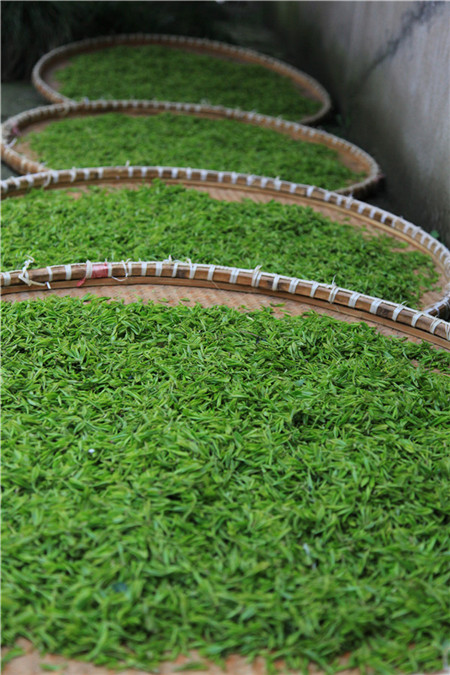 |
|
Spreading out the Longjing tea leaves for further processing. [Photo provided to China Daily] |
Some of the best-known West Lake Longjing brand names are those from Shifeng (Lion's Peak), Wengjia Mountain, Yunqi (Cloud Dwell), Hupao (Tiger Run) and Meijiawu, all areas around the West Lake. With fertile lands and mountains on three sides, the area stops chilly winds from the north while retaining warm air currents from the south. That favorable geographical feature, along with superior local water quality, helps to produce a great tea.
While West Lake Longjing is the representative of the tea variety, many other parts of middle Zhejiang also produce great Longjing. Hangzhou's Qiantang district and Yuezhou district produce good Longjing tea. Xinchang in Shaoxing produces Da Fo Longjing, which has become better known over the years.
Apart from other preparations, the tea goes through the traditional step of shouhui - limestone, wrapped in paper, is put in a pile of tea to reduce the heat of roasting and absorb the grassy odor. This step also helps to increase the tea's aroma and make it more suitable for storing.
Longjing tea is one of the most expensive varieties in China. Teas made in early spring can sell for more than 1,000 yuan ($) per 500 grams. The tea is picked 30 times each year until autumn, so buyers can always find more affordable prices. Tea stores also sell as little as 50 grams so anyone can get to try even the most expensive tea.